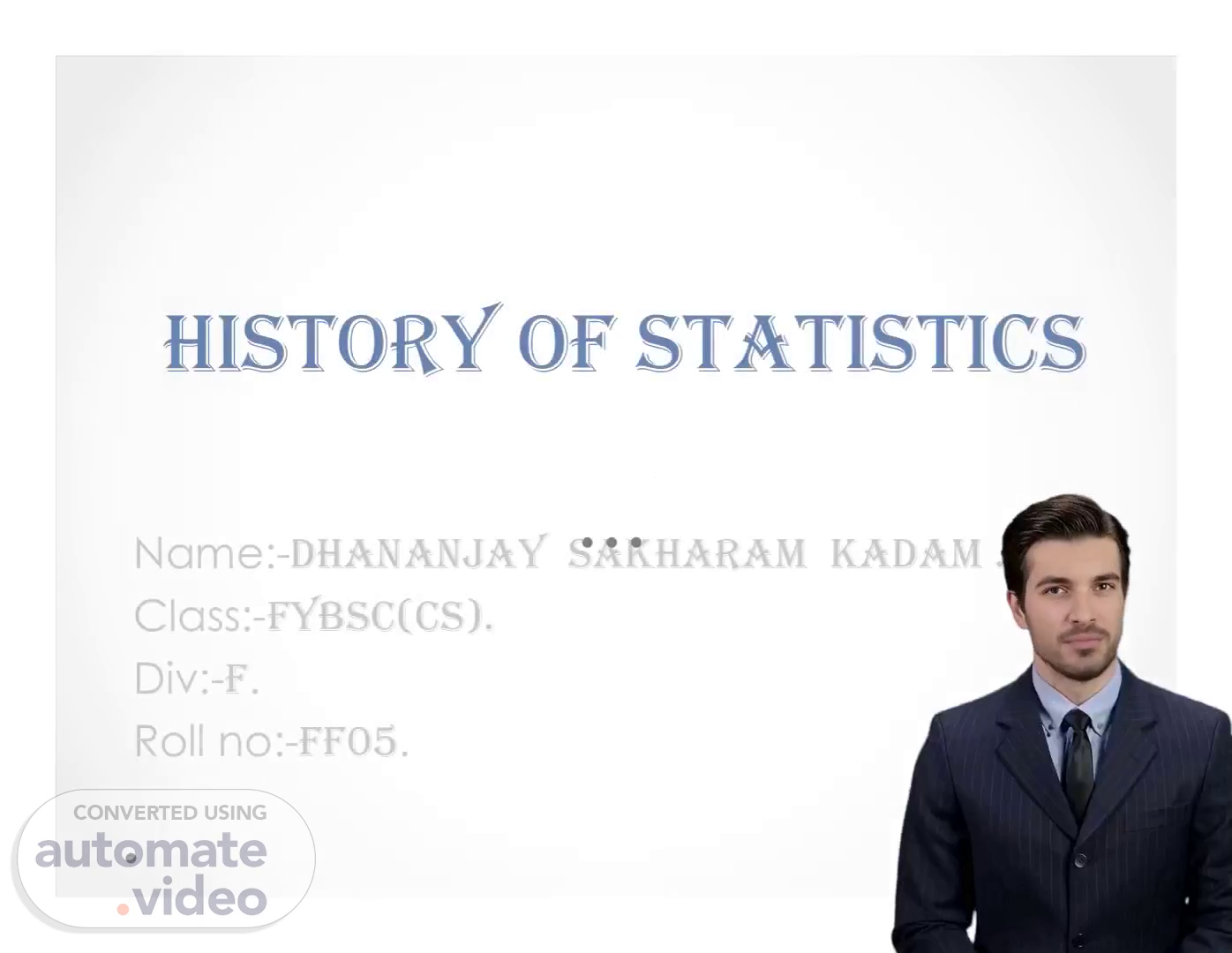
Page 1 (0s)
[Virtual Presenter] Welcome everyone to this presentation about the history of statistics. Today I will be talking about the origin of statistics, its definition, types, importance, scopes and limitations. Through this presentation, you will gain insights about the evolution of statistics and its role in this world. So let's get started with our first slide!.
Page 2 (25s)
[Audio] Statistics is a branch of mathematics which allows interpreting and analyzing data. It helps to collect, summarize, analyze and communicate data in effective ways. It is applied in various areas like scientific research, economics and market research. This slide looks into the meaning of statistics, its different types, importance, scopes and limitations..
Page 3 (51s)
[Audio] Statistics has a long and rich history, stretching back thousands of years, and having its roots in the study of statehood. Early civilizations such as the Babylonians and the Egyptians documented taxes, food surpluses, and population counts to comprehend the state of their empires and take decisive action. As time went on, the use of statistics became more refined. During the Middle Ages, Italian mathematician and historian Gerolamo Cardano was credited with founding the Probability Theory, beginning the groundwork which has become an essential area of study in modern statistics. During the seventeenth century, Sir Isaac Newton's breakthroughs in calculus gave a further opportunity to study probability theory and opened many new avenues for statistical research. All of these advancements, along with advances in computing technology in the twentieth century, have helped to shape the field of statistics into what it is today..
Page 4 (1m 49s)
[Audio] Statistics are a fundamental element of modern life. They give us the capacity to comprehend our surroundings and make informed choices. Statistics provide us with an opportunity to recognize trends, dissect designs and draw inferences from the data we have obtained. Statistics guide us in recognizing how certain elements relate and to make forecasts based on the figures we have. Statistics can be applied in pretty much any area, from medical care to economics to politics. Knowing the principles of statistics allows us to assess and decode the data we have, granting us a superior comprehension of the world around us..
Page 5 (2m 31s)
[Audio] Statistics is a field of study that has seen huge growth in recent times due to advancements in technology. Descriptive statistics is used to summarize data in a concise form, by calculating metrics such as the mean, median, mode, and standard deviation. This is done to interpret the data which has been collected. Inferential statistics makes predictions and draws conclusions from the collected data. Techniques such as hypothesis testing, confidence intervals, and regression analysis are used as a part of inferential statistics..
Page 6 (3m 8s)
[Audio] Statistics is a valuable and powerful tool used in multiple facets of life. It assists in simplifying complex data into facts and figures which allows for further comparison and analysis. Moreover, it is beneficial for research, decision making, forecasting, and controlling the outcomes of various functions. Additionally, it is used in planning, collecting data, and exploring new possibilities and trends. All of these reasons make statistics highly indispensable..
Page 7 (3m 41s)
[Audio] At the end of this presentation, I wish to express my gratitude for your attention. Statistics is an incredibly wide and varied field of research. It is applicable in almost all fields of professional and academic practice, including but not limited to computer science, economics, business and management, biology, medical science, industry, research, agriculture, psychology and education. Therefore, there are many possibilities to make good use of the knowledge and aptitude acquired from studying Statistics. Once again, thank you for your time and attention..